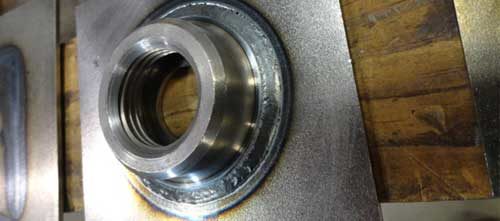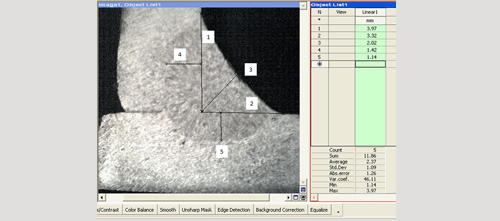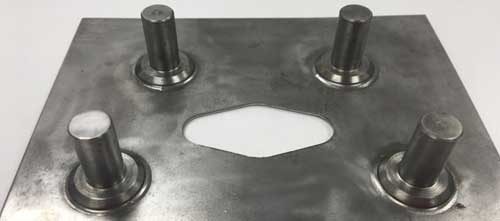At Titanova, we uniquely understand the issues associated with laser conduction mode welding parts that to date have not been candidates for laser welding. Typical autogenous keyhole laser welding is considered a precision process requiring very tight fit-up, similar to E-Beamwelding. The gap or fit up tolerances required for the keyhole welding process is approximately < 3% of thickness. There has to be enough materials melted to close the gap and produce a high integrity welded joint. This eliminates most low cost parts from this process due to the fact that the parts have to be machined to present press-fit type joint or fit-up. The industry defaults to Tungsten Inert Gas (TIG) Welding and Plasma Transferred Arc (PTA) process in order to achieve a robust production weld process but what they lose is the cost savings gained from higher process speeds and from being able to use thinner gauges enabled by a distortionless weld process.
LASER WELDING GMP

LASER WELDING GMP
Laser Fillet Weld

Laser Fillet Weld
Laser Welded Quiet Steel

Laser Welded Quiet Steel
Fills Gap without Distortion
The amount of melted material is directly related to the amount of distortion. The Titanova laser welding process fills a welding fit-up gap tolerance requirement window between traditional TIG and PTA and the “keyhole” processes such as laser and E-beam. The laser conduction mode welding process is about 3-5 times more forgiving with respect to part fit-up as compared to traditional key-hole welding processes. Therefore we can butt weld very thin gage materials (28 – 36 gauge) and even foils consistently. Typical process speeds achieved with diode laser are 3-5 times better than TIG or PTA. Since the weld nugget is smaller, the distortion is also improved significantly thus allowing for thinner gauges while simultaneously eliminating pre weld processing.
Take good pictures of the emerson meltal bulbs and the GMP Stud welds, Essex parts
Advantages of Laser Welding
Compared to traditional welding processes, laser conduction mode autogenous welding significantly reduces distorition and material thickness required for a repeatable, defect-free weld process. Titanova can tailor the laser beam size to match the metal gauge thickness and fit up tolerances. This means is that currently difficult or impossible-to-weld parts designed with much thinner gauges can now we welded repeatedly with Titanova’s diode laser technology. State of the art CNC based, metal process machinery such as punch presses, tube benders and press breaks are accurate enough to allow for laser welding thus eliminating the need to change upstream stamping or machining processes.
Wire Feed Laser Welding
Titanova, Inc. offers laser welding or cladding processes that can be used with wire. We offer both hot and cold laser wire feed welding. The advantages are increased throughput, less weld distortion, excellent quality, and quick turn-around time. Learn more about Laser Brazing here.
Applications
- Medical instruments
- Thin gauge parts
- Stainless steel heat exchangers
- Foils
- Thin gauge tubing
- Thin gauge metal boxes
- Fuel rails
- Compressor parts
- Distortion critical thin shell assemblies
Benefits
- Reduction of distortion
- Enables the reduction of thickness of material
- Repeatable defect- free process
- Tailored laser beam size to match the metal gauge thickness and fit up tolerances
- Wider range of capabilities for welding dissimilar materials

